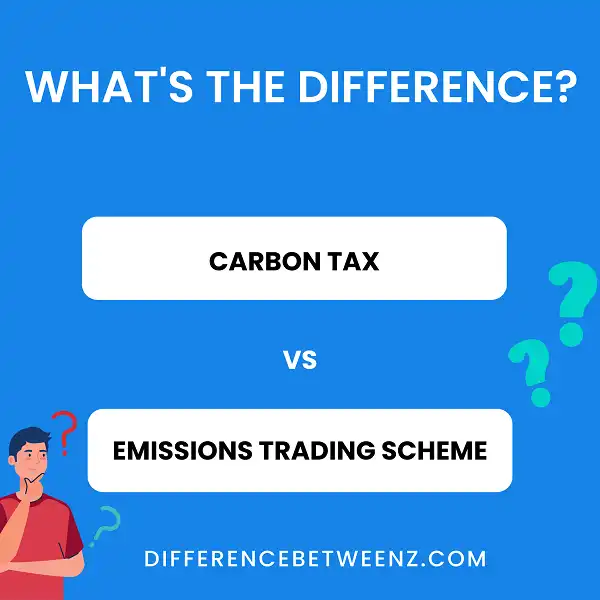It may be hard for some to make sense of the differences between a Carbon Tax and an Emissions Trading Scheme (ETS), but it doesn’t have to. In this blog post, we’ll help you understand what makes a carbon tax and emissions trading scheme different, why they both exist, and how policymakers can utilize them as tools when deciding how best to address climate change. Ready to dive in? Let’s get started!
What is Carbon Tax?
Carbon Tax is a form of taxation that involves charging a fee for carbon emitted into the environment. Carbon taxes are designed to reduce the amount of Carbon Dioxide released into the atmosphere, which helps to slow down global warming and climate change.
- Carbon Tax usually applies to all fuels used in transportation, domestic heating, and industrial sources, and is often implemented to encourage reducing dependency on fossil fuels, opting for renewable energy sources such as solar or wind power.
- Carbon taxes can help governments fund important environmental initiatives, while also providing economic benefits by boosting local employment while reducing energy consumption.
- Carbon Tax is an effective way to incentivize businesses and individuals to take responsibility for their carbon footprint and make a contribution toward mitigating global climate change.
What is Emissions Trading Scheme?
- The emissions Trading Scheme (ETS) is an effective and widely-used strategy for achieving emissions reduction. ETS works to reduce the release of greenhouse gases into the atmosphere by setting a limit on the amount that can be emitted.
- Companies or countries are issued permits to emit a certain quantity; if they exceed these emission limits, they must buy additional permits from others who have not used up their allotted quantity.
- This creates a financial incentive to reduce emissions while allowing companies or countries to benefit from saving money by not having to purchase extra permits. In this way, ETS encourages governments, businesses, and individuals to take action on climate change.
Difference between Carbon Tax and Emissions Trading Scheme
Carbon Tax and Emissions Trading Schemes are two popular tools that have been adopted across a number of jurisdictions in order to safeguard the environment from greenhouse gas emissions.
- Carbon taxes accrue when a business or individual emits more than its regulatory limit for carbon dioxide and other related gases into the atmosphere.
- An Emissions Trading Scheme works by allotting each company a certain amount of units as part of their energy output, which will then be regulated according to global demand and availability.
- The main distinction between Carbon Taxes and an Emissions Trading Scheme is that Carbon Taxes are set at a fixed rate while ETS works as an auction system with an ever-changing price based on market needs.
- Clearly, Carbon Tax places an obligation on big polluters to pay while Emissions Trading Scheme is itself a system of international trading between countries with varying levels of pollution.
Understanding the differences in Carbon Tax and an Emission Trading Scheme can help communities, businesses, and governments develop effective strategies to protect the environment and guarantee long-term sustainability for all.
Conclusion
Both carbon taxes and emission trading schemes are important tools in the fight against climate change. However, there are some key differences between the two approaches. Carbon taxes directly price carbon, while emissions trading schemes create a market for emissions. Carbon taxes tend to be more effective at reducing emissions, while emissions trading schemes are better at raising revenue. Ultimately, both policies can play an important role in combatting climate change, but it is important to understand the key strengths and weaknesses of each approach.


